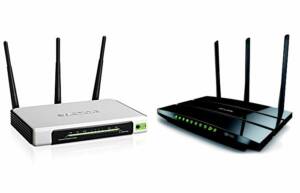- Understanding the main characteristics of routers
- Data transfer rate
- frequency range
- Number of ports
- Choosing a router brand and model
- Popular brands of routers
- Comparison of router models
- Reviews and recommendations from experts
- Installing and configuring the router
- Internet connection
- Configuring Network Settings
- Setting up security and protection
Understanding the main characteristics of routers
Routers are devices that allow you to connect multiple devices to the Internet at the same time. When choosing a router, you need to pay attention to several important characteristics. One of the main characteristics is the data transfer speed. It is measured in megabits per second (Mbps) and determines how quickly you can download and upload data from the Internet. Choose routers with high data transfer speeds so as not to waste a lot of time downloading files. The second important characteristic is the frequency range. Routers can operate at different frequencies – 2.4 GHz or 5 GHz. The higher the frequency, the faster the data transmission and the less interference. However, 5 GHz frequency has a shorter range than 2.4 GHz. Choose routers with a suitable frequency range depending on the size of your home or office. It is also worth paying attention to the number of antennas. The more antennas, the better the Wi-Fi signal in your home or office. However, the number of antennas is not always the main factor in choosing a router. Finally, it is important to look for additional features such as VPN support, guest Wi-Fi and access control. These features can be useful depending on your needs. Choosing the ideal router for your home or office depends on your needs and budget. Pay attention to the described characteristics and choose a router that meets your requirements.
Data transfer rate
High data transfer speed is one of the main criteria when choosing a router for your home or office. Today, most providers offer high-speed internet, and to get the most out of it, you need to have a router that can provide adequate data transfer speeds.
It is important to understand that data transfer speed depends on several factors, including the type of connection, the number of users using the network, and the distance between the devices and the router. But, in general, the higher the data transfer speed of the router, the faster and more reliable your network will work.
When choosing a router, you should pay attention to its technical characteristics and the data transfer speed that it can provide. For example, routers that support the 802 standard.
11ac is typically capable of transferring data at speeds of up to 1 Gbps, which is fast enough for most home and office networks.
It's also worth considering that higher data transfer speeds usually correspond to a higher price for the router. Therefore, you need to evaluate your needs and choose the model that best suits your requirements and budget.
And finally, if you have many devices at home or office that constantly use the Internet, then you need to pay attention to the multi-user data transfer function (MU-MIMO), which allows the router to efficiently transfer data to several devices simultaneously, providing higher data transfer speeds for each of them.
frequency range
When choosing a router, it is important to consider its frequency range. There are two main ranges - 2.4 GHz and 5 GHz. Routers with a 2.4 GHz range have a longer range, but the data transfer rate is lower than routers with a 5 GHz range. Routers with a 5 GHz range provide higher data transfer rates, but have a shorter range. In addition, routers with a 5 GHz range can only work with devices that support this range, while routers with a 2.4 GHz range can work with all Wi-Fi devices. When choosing a router, consider what devices you will be connecting and how far they are from the router.
Number of ports
The number of ports on a router plays a big role when choosing a device. If you plan to connect multiple devices to your router, then you need a router with multiple ports. Typically, home routers have 4 ports, but there are also devices with 8-16 ports. If you need a router for a small office, then choose a device with Gigabit Ethernet ports, as they will allow you to achieve higher data transfer speeds. Also, if you have devices that require connection via an Ethernet cable, choose a router with enough ports.
Choosing a router brand and model
When choosing a router, you need to take into account many factors, such as the size of the room, the number of devices that will connect to the network, the speed of the Internet connection, etc.
d.
However, one of the key points when choosing a router is the brand and model of the device. There are many manufacturers on the market, each of which has its own characteristics and advantages.
For example, routers from ASUS and TP-Link are considered among the best on the market. Devices from these manufacturers are distinguished by high build quality, long service life and a wide range of functionality.
It is also important to pay attention to the router model. Some models may support higher data transfer speeds, have more ports, or be equipped with additional features to improve network security.
As a result, when choosing a router brand and model, you need to take into account your needs and network requirements, as well as pay attention to ratings and user reviews of specific devices.
Popular brands of routers
Choosing a router for your home or office can be a daunting task, especially if you are not familiar with the brands and models that are on the market. Some of the most popular router brands include Linksys, Netgear, ASUS, TP-Link, and D-Link.
Linksys is one of the most well-known router brands. They produce routers for home use and office networks. Linksys also offers routers that support Wi-Fi 6 technology, making them ideal for modern home networks.
Netgear is another popular router brand that is known for its high-speed routers. They also offer routers that support Wi-Fi 6 technology and many other features such as parental control management and protection against cyber attacks.
ASUS is known for its high-quality computers and laptops, but also produces high-quality routers. They offer routers with AiMesh technology, which allows you to create powerful wireless networks with a large range.
TP-Link is another popular router brand that is known for its affordable models. They produce routers for home use, office networks, and even mobile devices. TP-Link also offers routers with Wi-Fi 6 technology support and many other features.
D-Link is another well-known router brand that produces routers for home use and office networks. They offer routers with support for Wi-Fi 6 and MU-MIMO technologies, which provide a stable and fast Internet connection.
Choosing a router brand depends on your needs and budget. No matter which brand you choose, make sure it meets your requirements and provides a fast and stable internet connection.
Comparison of router models
When choosing a router for your home or office, you need to consider many factors, such as data transfer speed, network coverage, number of connections, etc.
d. The market offers many models of routers from different manufacturers, each of which has its own features and advantages.
One of the most popular router manufacturers is TP-Link. Models of this brand have high data transfer speeds and excellent network coverage. In addition, TP-Link routers have a simple and intuitive interface, which makes their use comfortable even for inexperienced users.
Another popular manufacturer is ASUS. Models of this brand have high performance and excellent design. In addition, ASUS routers have many additional features such as a VPN server, virus protection and much more.
If you are looking for a router with high data transfer speeds, then pay attention to models from Netgear. Routers of this brand have high performance and can provide stable operation under high load conditions.
In any case, when choosing a router, you need to take into account your needs and the tasks that it must solve. By choosing the right model, you can ensure stable operation of your network and enjoy high data transfer speeds.
Reviews and recommendations from experts
When choosing the ideal router for your home or office, you need to pay attention to several important parameters. As experts note, one of the main criteria is the data transfer speed. The higher the speed, the faster Internet pages will load and other tasks will be completed.
It is also important to consider the range of the router. If you have a large home or office, then you need to choose a model that will cover all the rooms.
In addition, experts advise paying attention to the functionality of the router. For example, some models have the ability to configure Internet access time for individual devices, which is especially important for parents who want to limit children’s access to certain sites.
It is also important to consider updating the router firmware in order to have access to new features and bug fixes.
Overall, there are many parameters to consider when choosing the ideal router, and it is best to seek advice from experts who can help you make the right choice.
Installing and configuring the router
Once you have selected and purchased the ideal router for your home or office, you need to configure it for use. First, you need to connect the router to your modem or Internet service provider. You can then set up a name and password for your Wi-Fi network to keep it secure.
To configure the router, you can use the web interface, which can be opened in a browser by entering the router's IP address. You may also need to configure ports to allow access to certain applications or devices.
Some routers have a QoS feature that allows you to control the speed of your Internet connection for different devices and applications. You can use this feature to ensure optimal performance for your work or entertainment.
Don't forget that for network security, you should set a strong password to log into the router's web interface and update it regularly. You can also use the guest network feature to prevent access to your main network.
We hope this article will help you install and configure your ideal router for optimal performance of your home or office Internet.
Internet connection
In order to enjoy fast Internet in your home or office, you need to choose the right router. There are many models on the market, but not all of them will suit your needs.
The first step when choosing a router is to determine your internet speed. If you have a very slow connection, then there is no point in buying an expensive router with high data transfer speeds, they will simply not be used.
It is also worth paying attention to the number of users who will connect to the router. If this is a large family or an office with many employees, then you need to choose a router with high power and the ability to simultaneously connect several devices.
Another important factor is security, especially if you will be using the Internet for banking or transmitting confidential information. In this case, you need to choose a router that supports VPN connection and has a good level of protection.
Choosing the perfect router may take time, but it is an investment worth the money. The right choice will help you enjoy fast, stable and secure Internet in your home or office.
Configuring Network Settings
Once you've chosen the ideal router for your home or office, you need to configure its network settings to ensure maximum speed and reliability.
The first step is to connect the router to the Internet. To do this, you need to connect an Ethernet cable from the modem to the WAN port of the router.
Then you need to set up your wireless network. In the router settings menu, you need to select a name and password for the wireless network, and also select a channel with the minimum amount of interference.
For maximum security, you must enable WPA2-PSK encryption and disable WPS.
Finally, you need to configure ports and access rules for connected devices. In the router settings menu, you can configure ports for games, streaming video and other applications, as well as create access rules for different devices.
Correctly configuring network settings will ensure maximum performance and security of your router.
Setting up security and protection
When choosing a router for your home or office, you need to pay attention to its security and protection features. Modern routers provide a wide range of settings that help protect your network from external threats.
Important security features include Wi-Fi encryption settings and network access password settings. It is important to choose a fairly complex password and change it regularly.
To protect against external attacks, we recommend using a firewall feature that filters incoming traffic and blocks suspicious attempts to access your network.
You should also pay attention to the possibility of installing a VPN connection, which provides an additional level of protection when browsing the Internet.
Properly setting up the security and protection of your router will help you avoid problems with network hacking and protect your data from theft or leakage.
Read further:






